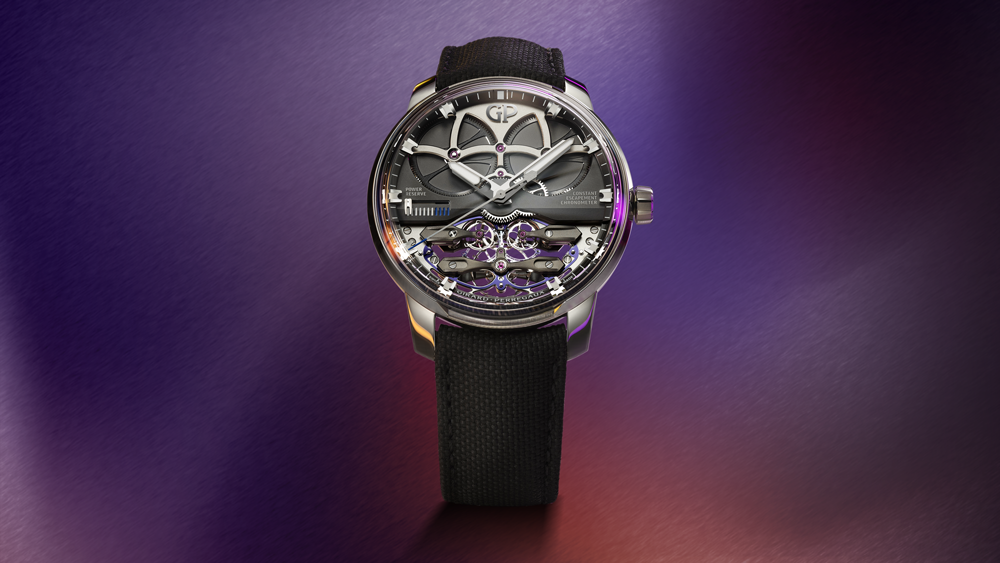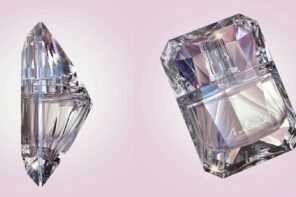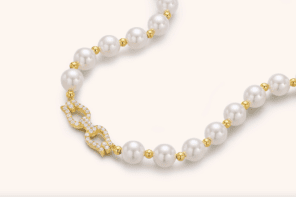In a recent meeting in New York last month, Girard-Perregaux’s CEO, Patrick Pruniaux, revealed the culmination of two decades of dedication: the Neo Constant Escapement, a stunning addition to the world of high horology. “It’s been 20 years in the making,” Pruniaux shared. “I mean, it took almost three years to craft that movement. So, it took almost 10 years for the initial version and nearly 10 years for the current version, where we completely redesigned the entire movement.”
The first iteration of this remarkable timepiece, the Constant Escapement L.M., made its debut in 2013 and won the prestigious “Aiguille D’Or” at the Grand Prix d’Horlogerie de Genève (the Oscars of watchmaking) in the same year. It stood out for its constant force mechanism, a device ensuring consistent stability regardless of the available energy. The new Neo Constant Escapement not only enhances the technical aspects but also the aesthetics.
To understand this technology, Pruniaux draws an analogy with running a marathon. An average person may start fast and slow down as fatigue sets in, whereas a professional runner maintains a constant speed throughout the race. This endurance mirrors the operation of the constant force escapement. Girard-Perregaux is not the pioneer in incorporating this concept into wristwatches, as F.P. Journe introduced it in his 1991 wristwatch, the Tourbillon Souverain, featuring a remontoir d’égalité, also known as a constant force mechanism. Journe’s approach adhered to traditional watchmaking standards in terms of components, inspired by a Breguet clock mechanism but scaled down for wristwear. In contrast, Girard-Perregaux’s innovation takes a modern path by integrating machined Silicium silicon components.
Why use silicium? It guarantees that the balance’s amplitude remains consistent, regardless of the energy stored in the barrel. This ensures that timekeeping precision remains steady, even as the power reserve decreases. Legend has it that the idea for the silicium blade (introduced in watchmaking by Ulysse Nardin in 2001 in its Freak model) emerged when a watchmaker playfully bent his train ticket, forming a “c” shape that accumulated energy to a point of instability before snapping back into an inverted “c” shape. The transition from compression to bending is the essence of the company’s constant escapement. Energy from the wheels is transmitted through a rocking lever to the delicate silicium blade, which is six times thinner than a strand of hair. The constant escapement utilizes its flexibility as the blade engages with a lever to deliver an impulse of energy to the balance wheel.
While all this technology was present in the 2013 Constant Escapement L.M., the new Neo Constant Escapement brings several enhancements. Claude-Daniel Proellochs, marketing and product manager at Girard-Perregaux, highlights, “We expanded the use of silicon, improving the power reserve from six days to seven. We have more torque, which is crucial for us, and we’ve incorporated a self-starting mechanism. We are also COSC certified.” Unlike its predecessor, the Neo Constant Escapement features skeletonized rhodium-plated hands that emerge from the center of the dial. Additionally, it boasts a central sweep seconds hand with a sky-blue tip and an arrow-shaped counterweight.
The entire mechanism is housed beneath a sapphire crystal “box” encased in grade 5 titanium. While it measures 45 mm, which is quite substantial by current standards favoring smaller watch sizes, it is reduced by 1 mm from the 2013 version. Proellochs, however, suggests that further size reduction is currently impossible due to movement constraints. Pruniaux hints at the possibility of a smaller version in the future, saying, “Maybe, who knows. As long as it’s long and painful, we’ll do it” with a touch of humor. Nevertheless, its curvature and absence of a bezel give it the feel of a 42mm watch. Thanks to its titanium case and silicium components, it remains incredibly lightweight, and the purple hue of the silicium components, while vibrant in photos, is more subdued in person for those who prefer a subtler color palette.
This masterpiece is priced at $99,600 and is not limited in production. However, due to its complexity, the brand anticipates producing only 50 to 70 units each year. Presently, Girard-Perregaux boasts approximately 25 SKUs classified as high horology, with Pruniaux asserting, “this watch is almost the center of gravity, from a technical point of view, for the brand.”





